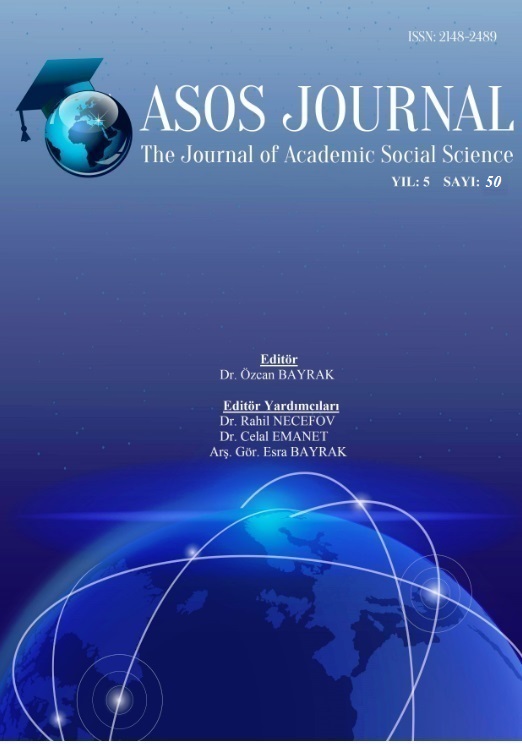Author :
Abstract
Barajlar, fiziksel bir olgudan ziyade, toplumsal bir olgu olarak cereyan etmektedirler. Çünkü barajların, ortaya koyduğu sonuçlar bakımından bölgede yaşayan halk üzerinde sosyolojik etkileri bulunmaktadır. Bu çalışma, baraj bölgesinde yaşayan insanların baraja yönelik algı ve tutumlarını, baraj nedeniyle toplumsal yapıda meydana gelen değişimleri ve mekânsal dönüşümü anlamayı amaçlamaktadır. Bu amaç doğrultusunda, çalışmanın temel inceleme nesnesini Artvin’in Borçka ilçesinde yer alan Muratlı Barajı ve bu baraj bölgesinde yer alan Karşıköy halkı oluşturmaktadır. Bu bağlamda, Karşıköy’de yaşayan 4 erkek ve 2 kadın olmak üzere toplamda 6 kişiyle nitel araştırma yöntemi aracılığıyla derinlemesine mülakatlar yapılmıştır. Alan araştırması sonucunda, barajın, bölgede yaşayanlar açısından çok farklı algı, tutum ve değerler içerdiği, toplumsal yapıyı dönüştürdüğü ve mekânsal dönüşümün farklı sosyolojik izleklerinin olduğu sonucuna ulaşılmıştır.
Keywords
Abstract
Dams occur as a social phenomenon rather than a physical phenomenon. Because the dams have sociological effects on the people living in the region in terms of the results they have produced. This study aims to understand the perception and attitudes of the people living in the dam zone to the dam, the changes that take place in the social structure due to the dam and the spatial transformation. For this purpose, Muratlı Dam located in the town of Borçka in Artvin and the people of Karşıköy located in this dam region constitute the basic investigation object of the study. In this context, in-depth interviews were conducted with a total of 6 people, 4 men and 2 women living in Karşıköy, through qualitative research method. As a result of the field survey, it was concluded that the barrage contains very different perceptions, attitudes and values in terms of the inhabitants of the region, transforms social construction and has different sociological trajectories of spatial transformation.





